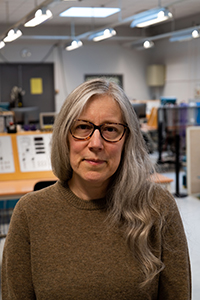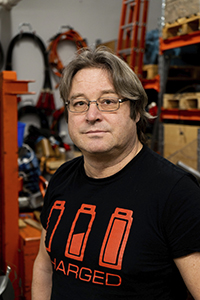Adding 3D in the system modeling of electric drives has for long been neglected due to the increase of computation time it would take. Now this SEC funded project builds models for an energy saving wholistic approach.
In this newly started project, Chalmers researchers Sonja Lundmark, Torbjörn Thiringer and Emma Grunditz take a wholistic approach to modelling the stator core and windings in electric machines, hoping to improve performance and reduce the energy loss.
In electric motors and generators, torque is created in the magnetic fields between the rotating part, the rotor, and the stationary part, the stator. The stator consists of a stack of thin plates (a laminated core) and electromagnetic coils (windings). The project aims to create models that will give an overview of the efficiency and performance of the machine, including 3D-effects such as leakage magnetic fields. In the long run this can give manufacturers a tool to find the perfect match between energy efficiency, torque ripple and lifetime of the stator.

Normally the stator and the coils are analyzed in 2D to save time and computational power. “There have been 3D studies before on parts of the stator. The unique in this project is that we will create a model for analyzing the whole stator, to combine the 3D models with existing 2D models, and this could give our partners an improved tool for energy efficiency” says Associate Professor Sonja Lundmark, who studied 3D modeling of electric machines already as a PhD student.
The models could also enable, in a more precise way than before, to find the right composition of the stator to control amount of torque ripple and energy loss and weigh it against other constructional issues like cost and environmental friendly design.

“The electric machine is 130 years old, and it hasn’t changed much since the beginning. Perhaps no groundbreaking changes are possible, but just increasing the energy efficiency a tenth of a percent can become many megawatt hours in the energy consumption looking at an entire electrified transportation system”, says Professor Torbjörn Thiringer.
Volvo Cars is the main partner of the project and the researchers think there is a good chance the car manufacturer will be able to use the project’s results.
“We are grateful that we get time to test this and the interest from industry is large looking at the many industrial participants in the reference group. Input from industry is important for us. They can give us that know-how that isn’t to be found in literature”, says Torbjörn Thiringer and Sonja Lundmark.